Breaking a bone is a frightening experience under any circumstances, but when it happens in a remote location far from immediate medical assistance, it becomes a potentially life-threatening emergency. Whether you’re hiking through mountains, camping in the wilderness, or exploring remote areas, understanding how to handle a fracture when professional help isn’t readily available could save a limb—or even a life. The following comprehensive guide explores the steps to take, decisions to make, and techniques to employ when dealing with a broken bone in a wilderness or isolated setting. While the ideal response is always to seek professional medical help, knowing these survival medical techniques can make a critical difference during the hours or days before evacuation or rescue.
Recognizing a Fracture in the Wilderness
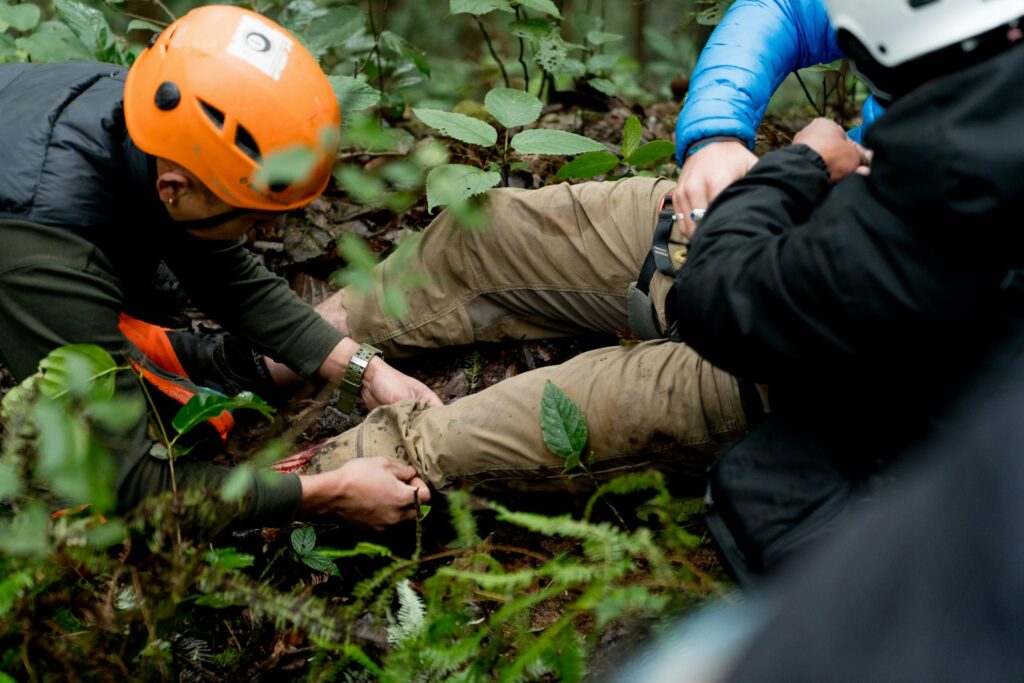
Properly identifying a broken bone is the first crucial step in wilderness emergency management. Common signs include intense pain that worsens with movement, swelling, bruising, visible deformity, and an inability to bear weight or use the injured area. In some cases, you might hear a snapping sound at the moment of injury, or the affected limb may appear shorter or bent at an unusual angle. Open fractures, where bone protrudes through the skin, are particularly serious and immediately obvious. Remember that in remote settings, adrenaline can mask pain, so a thorough assessment is essential even if the injured person claims they’re “fine.” When far from help, err on the side of caution and treat suspected fractures as actual breaks until proven otherwise.
Immediate Actions After a Wilderness Fracture
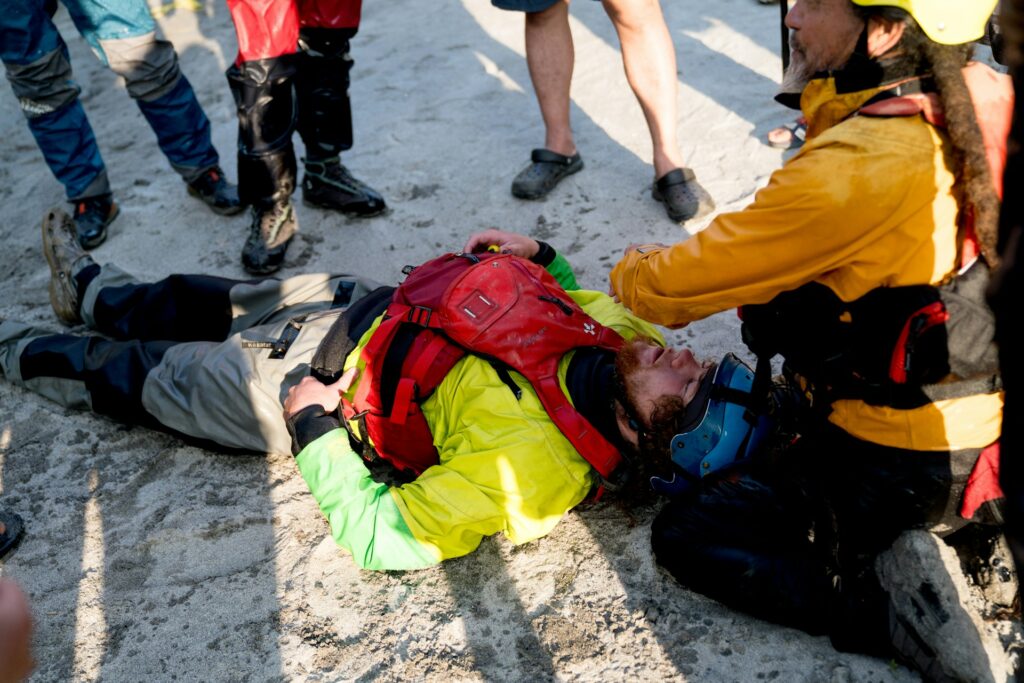
Once you’ve identified a possible fracture, your first priority is to prevent further injury. Stop all movement and help the injured person find a safe, comfortable position that minimizes pain. Check for additional injuries, particularly if the fracture resulted from a fall or other traumatic event. Assess vital signs including consciousness, breathing, pulse, and circulation beyond the injury site. Control any bleeding with direct pressure, being extremely careful around open fractures. Remove any constricting items like rings, watches, or tight clothing from the injured area before swelling increases, as these can cut off circulation. If you’re in a dangerous location (avalanche zone, flash flood area, exposed ridgeline), you’ll need to make difficult decisions about moving the person to safety despite the fracture.
Wilderness Fracture First Aid Basics
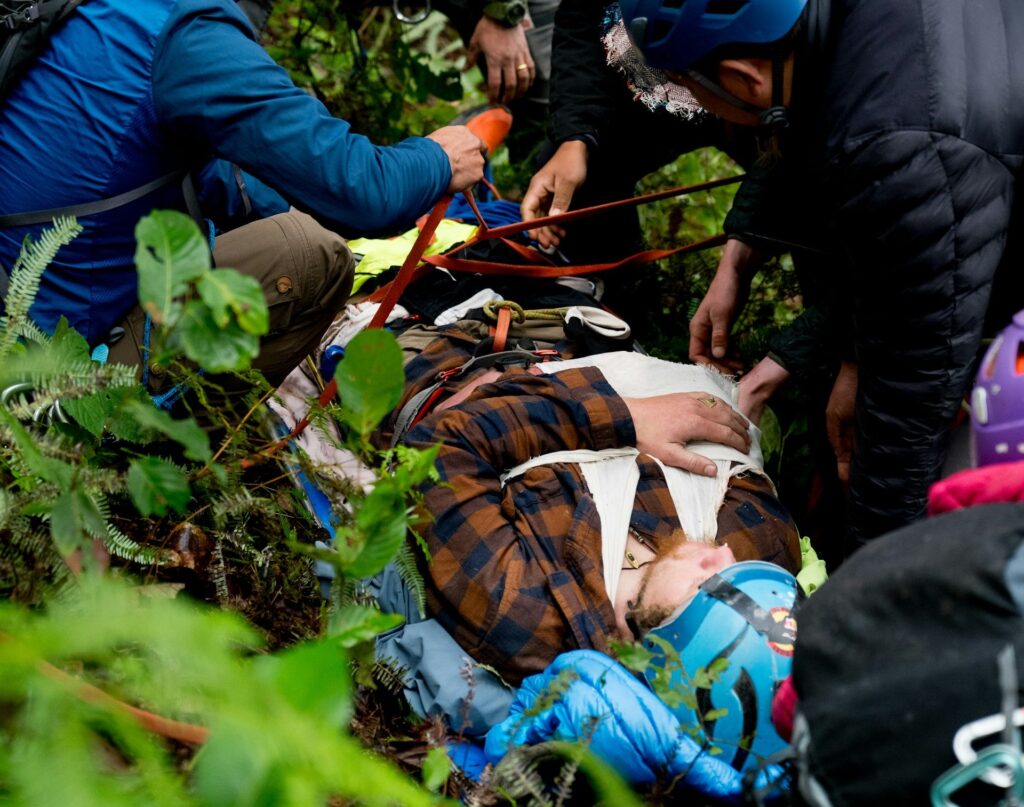
Once in a stable location, begin proper wilderness first aid for the fracture. Clean any open wounds gently with the cleanest water available, ideally filtered or treated. Cover open fractures with the cleanest cloth available without pushing on the protruding bone. For pain management, administer any available appropriate medications according to proper dosing guidelines. Apply cold therapy if available, using snow in a waterproof container or cold water from streams, but never apply ice directly to skin. Elevation can help reduce swelling, so position the injured area above heart level when possible. Throughout this process, continually monitor for signs of shock, including pale or clammy skin, rapid breathing, confusion, or weakness, and treat accordingly by keeping the person warm and lying flat with legs slightly elevated.
Improvised Splinting Techniques
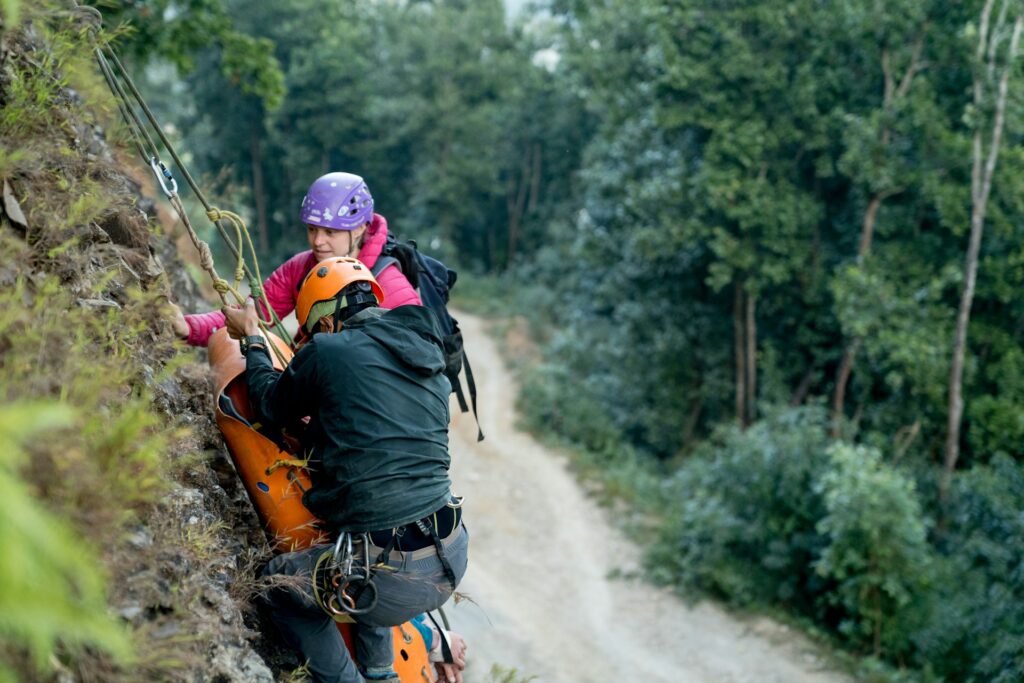
Proper immobilization through splinting is crucial when managing fractures in remote settings. A good wilderness splint immobilizes the joint above and below the fracture site, preventing movement that could cause further damage. Effective improvised splinting materials include trekking poles, tent stakes, sturdy branches, rolled magazines, foam sleeping pads, or backpack frame stays. Secure these rigid items to the injured area using bandanas, torn clothing, belts, or backpack straps. For arm fractures, a sling made from clothing can provide additional support. When splinting, maintain the limb in the position found unless circulation is compromised, in which case gentle realignment may be necessary. After applying any splint, regularly check circulation by feeling for a pulse below the injury and monitoring skin color and temperature in the extremity.
When and How to Realign a Fracture
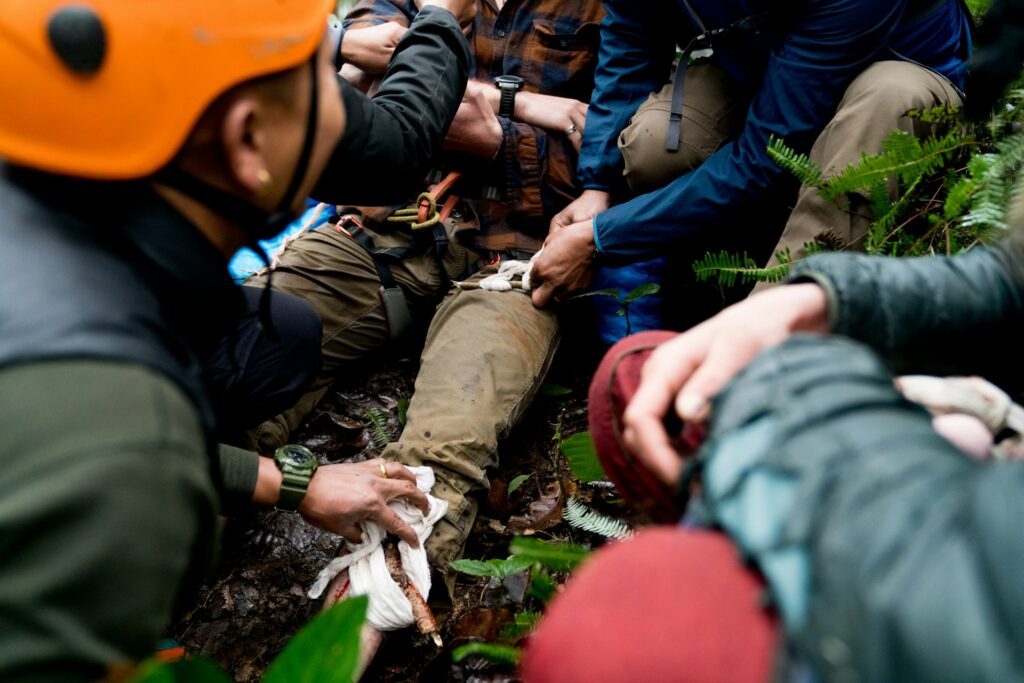
Generally, wilderness medicine principles advise against attempting to reset or realign bones unless you have proper training. However, in certain critical situations, gentle realignment may be necessary—specifically when there’s no pulse beyond the injury site or when the limb’s position makes evacuation impossible. If realignment is essential, apply gentle, steady traction in line with the limb while supporting the injury site. Stop immediately if resistance or increased pain occurs. Never attempt to push protruding bones back under the skin in open fractures, as this dramatically increases infection risk. After any realignment attempt, recheck circulation, sensation, and movement in the extremity. Remember that this procedure carries significant risks and should only be attempted in true emergencies when evacuation delays would create greater dangers than the realignment itself.
Evacuation Decision-Making
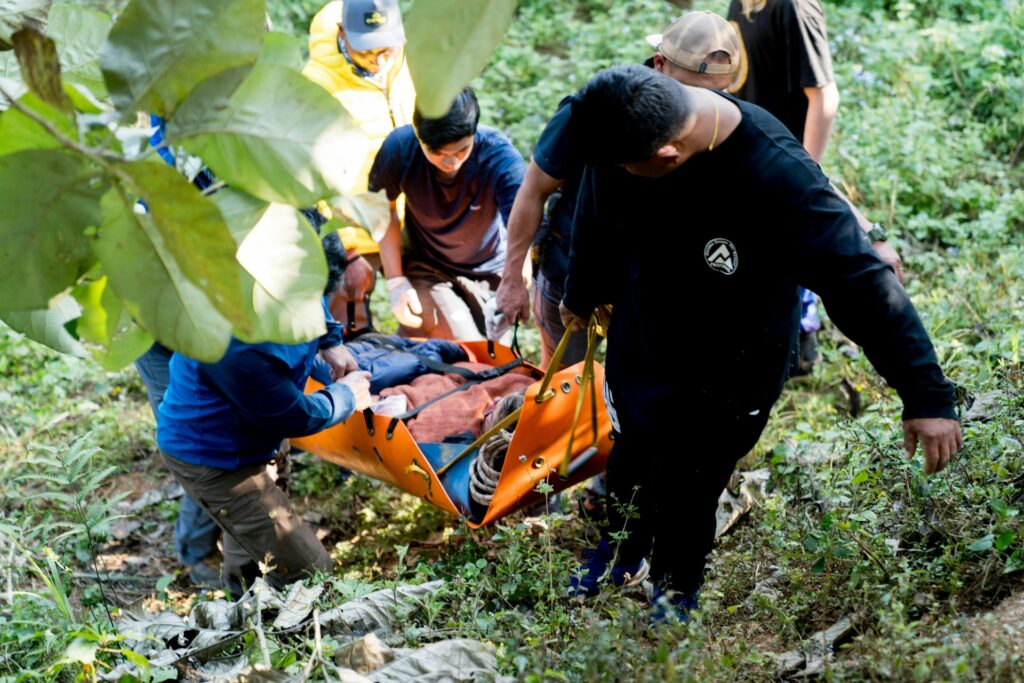
Determining whether to evacuate or wait for rescue is perhaps the most critical decision you’ll face after a wilderness fracture. This decision depends on multiple factors: the severity and type of fracture, distance from help, available communication methods, terrain challenges, weather conditions, group size, available supplies, and the injured person’s overall condition. Open fractures, femur fractures, pelvic fractures, and spinal injuries generally require urgent professional care and justify aggressive evacuation efforts. Consider your communication options—satellite phones, personal locator beacons, or pre-arranged check-in procedures that might trigger rescue if missed. If evacuation is necessary, plan carefully, considering whether the injured person can self-evacuate with assistance or requires carrying, and whether splitting the group to send for help is the safest approach.
Self-Evacuation with a Fracture
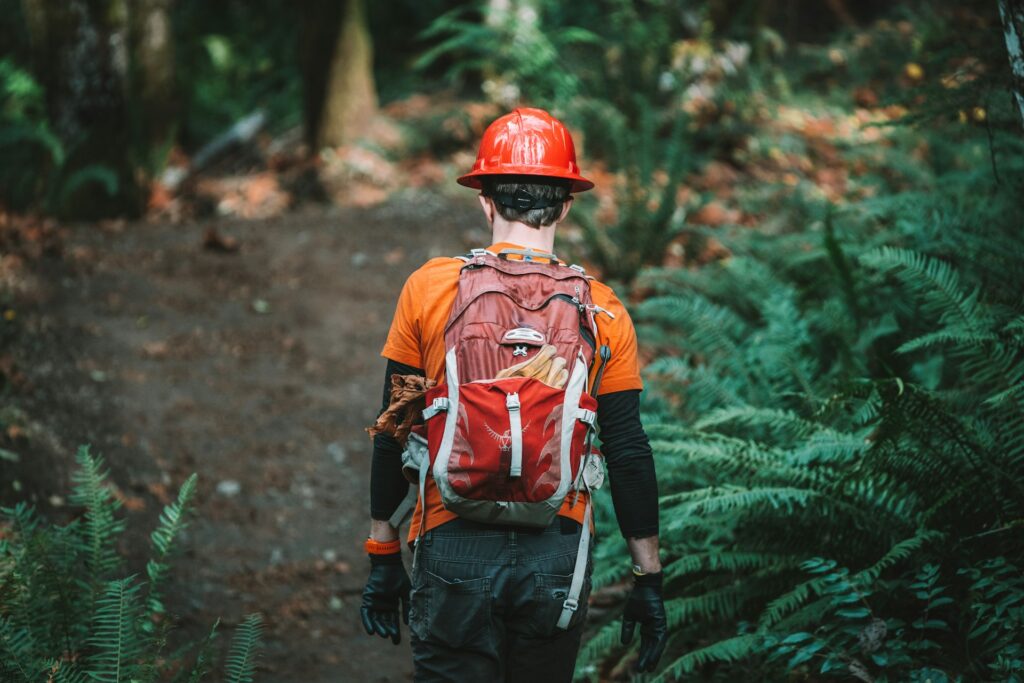
If professional rescue isn’t available and the injury permits, self-evacuation may be necessary. For lower extremity fractures, fashioning crutches from sturdy branches can provide mobility support. Trekking poles, adjusted to the proper height and used in pairs, make excellent improvised crutches when padded with available soft materials. For more serious injuries that prevent walking, improvised stretchers can be constructed using sleeping bags reinforced with poles, branches, or even skis. When resources are extremely limited, the “piggyback” carry works for short distances with smaller individuals. If the injured person must move independently, enforce frequent rest periods, provide pain medication if available, and continually reassess the injury for signs of complications. Remember that self-evacuation increases risks but may be necessary when balancing the danger of the fracture against environmental threats like severe weather or depleted supplies.
Managing Pain in Remote Settings
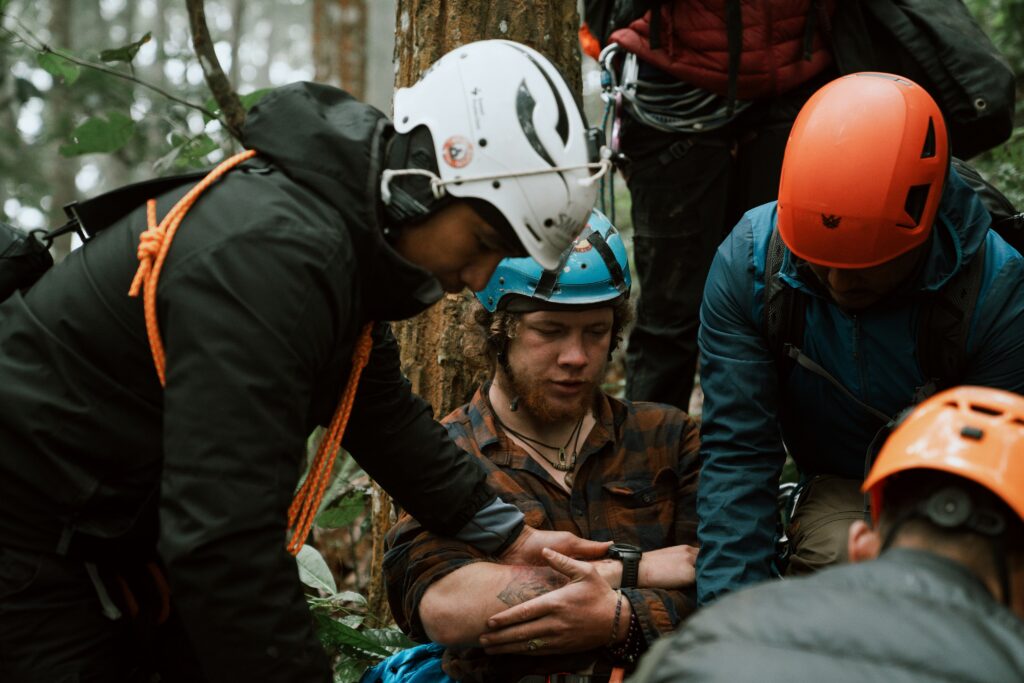
Controlling pain becomes a significant challenge when traditional medical resources aren’t available. If you carry a wilderness first aid kit, it may contain appropriate pain medications like ibuprofen, acetaminophen, or in some cases, stronger prescription medications. Follow proper dosing guidelines and be aware of any contraindications. Beyond medications, numerous non-pharmaceutical approaches can help manage fracture pain. Proper immobilization itself significantly reduces pain by preventing movement of the broken bone ends. Cold therapy, when available, can reduce both pain and swelling during the first 24-48 hours. Psychological techniques including controlled breathing, visualization, and distraction can provide surprising relief in emergency situations. Positioning the injured area comfortably, usually slightly elevated on soft materials, can also reduce pain levels during the evacuation process.
Preventing and Recognizing Complications
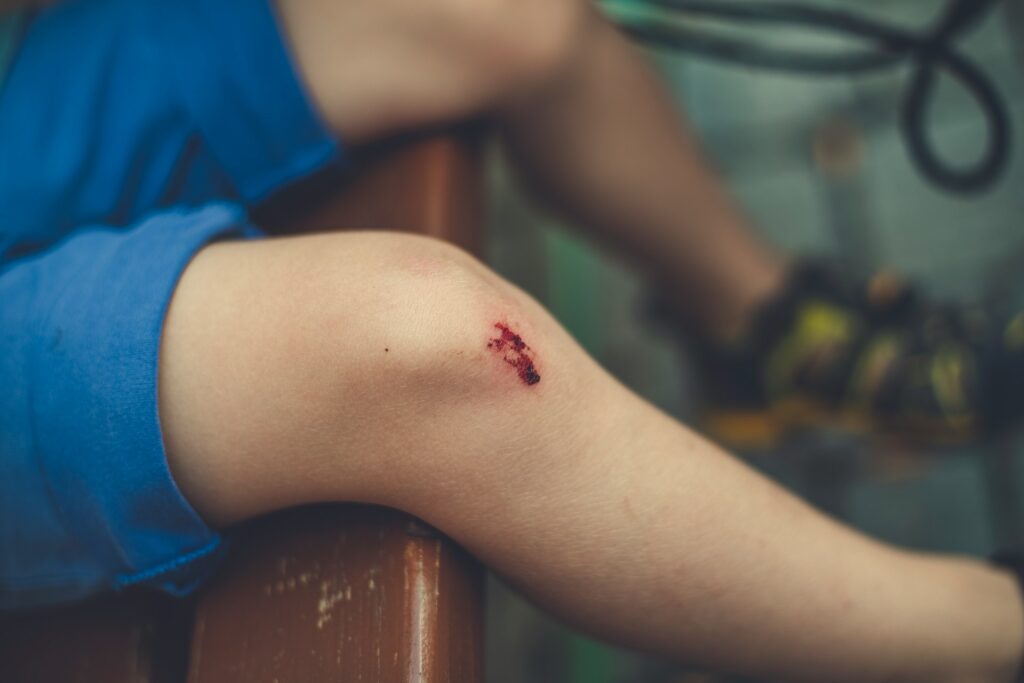
Several serious complications can develop from fractures in wilderness settings, particularly during extended evacuation periods. Compartment syndrome—pressure buildup in muscle compartments that can lead to tissue death—presents with escalating pain unrelieved by normal measures, tenseness in the affected area, and numbness or tingling beyond the injury. Infection risk increases dramatically with open fractures, with warning signs including increasing pain, redness, warmth, pus, foul odor, or fever. Fat embolism, though rare, can occur with long bone fractures when fat particles enter the bloodstream, causing breathing problems, confusion, or rash. Blood clots may develop during prolonged immobilization, particularly in leg fractures, with symptoms including increasing pain, swelling, and warmth in the calf. Regularly reassessing the injury and monitoring for these complications allows for early intervention when possible.
Wilderness-Specific Fracture Considerations
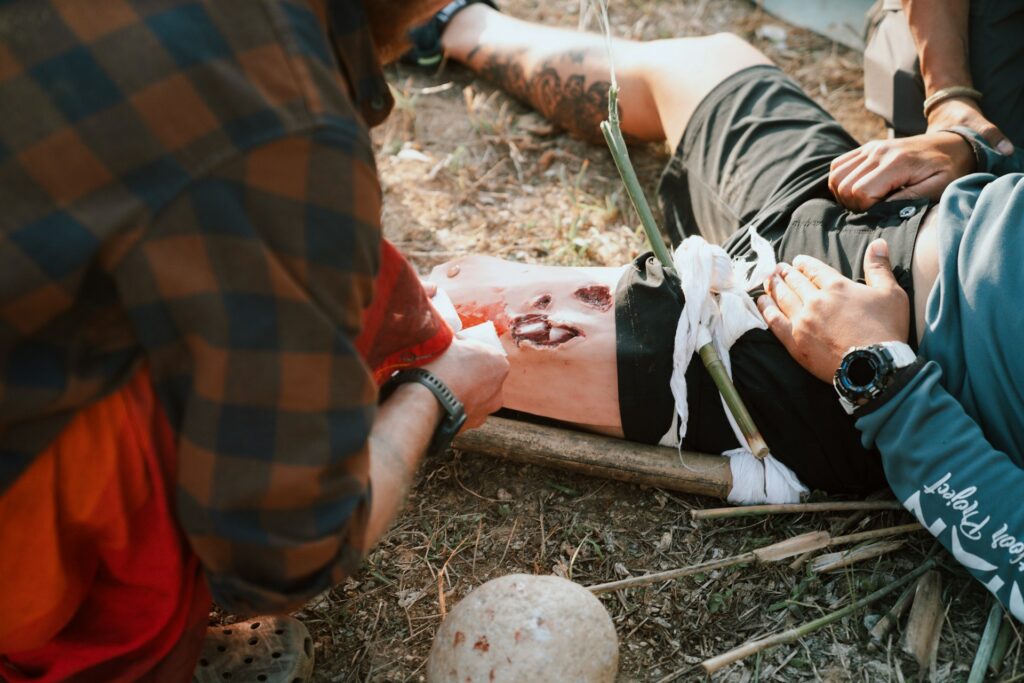
Different environments present unique challenges when managing fractures far from help. In cold environments, balancing fracture care with hypothermia prevention becomes critical—insulate the injured person with available materials while still allowing injury monitoring. Hot environments increase dehydration risks, requiring careful fluid management while caring for the fracture. Water environments present drowning risks with fractures; personal flotation devices become essential, even in shallow water. Evacuation across difficult terrain requires creative problem-solving, whether navigating dense forests, steep slopes, or water crossings with an immobilized patient. Wildlife considerations may also factor into your planning, as some predators are attracted to blood from open fractures. Being aware of these environmental factors allows you to develop comprehensive management strategies that address both the fracture and the specific challenges of your surroundings.
Psychological Aspects of Remote Fracture Management
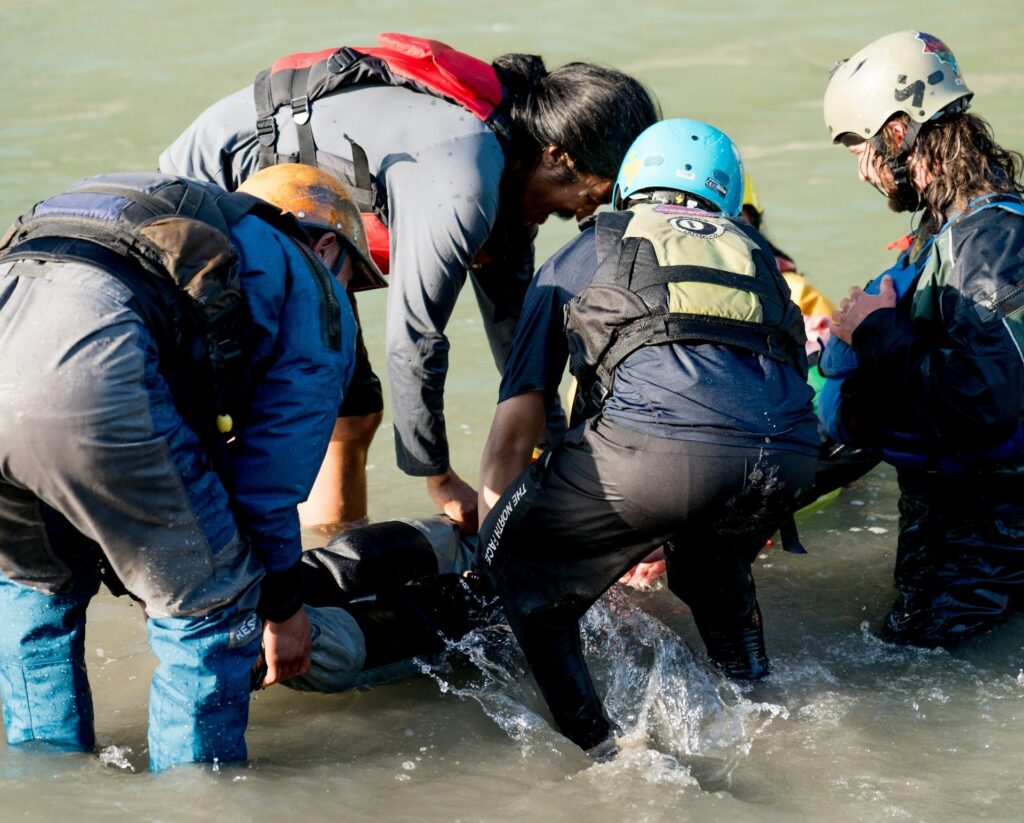
The psychological impact of a serious injury in a remote location affects both the injured person and their companions. Fear, anxiety, and catastrophic thinking can complicate the situation by impairing decision-making and potentially worsening the physiological response to injury. As a caregiver, maintaining a calm, confident demeanor while acknowledging the seriousness of the situation helps establish trust and reduce panic. Clear communication about the injury, treatment plans, and realistic timelines for evacuation gives the injured person a sense of control during a frightening experience. Encourage realistic optimism without false reassurances. For extended evacuations, preventing boredom and despair becomes important through conversation, storytelling, or simple games that distract from pain and fear. Remember that psychological first aid is as important as physical care in wilderness emergencies.
Preventative Measures for Wilderness Travelers
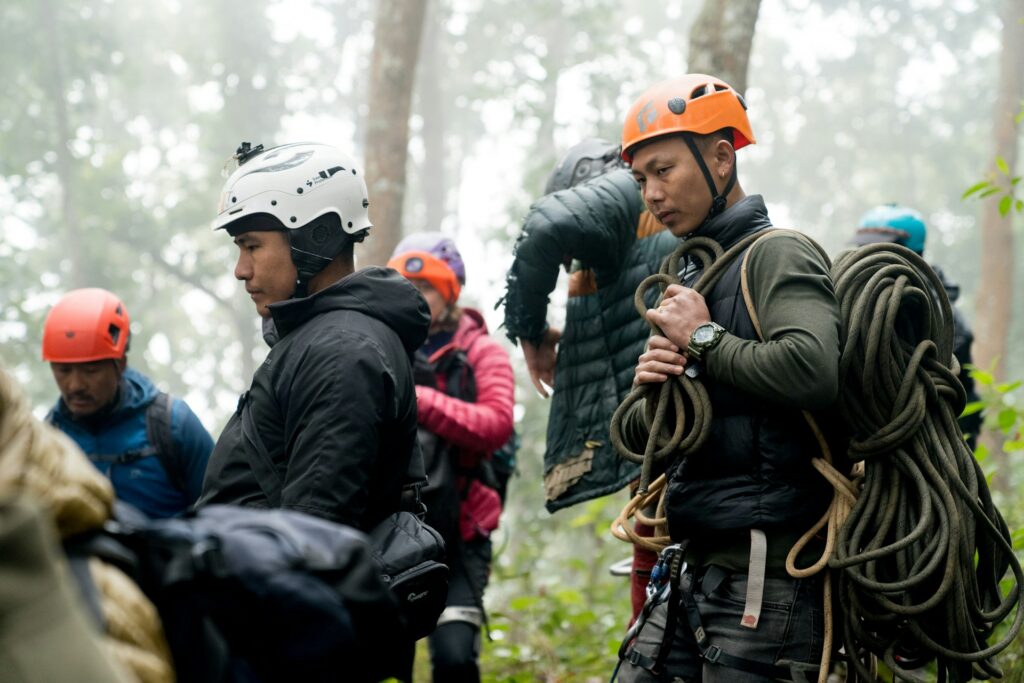
Proper preparation significantly reduces both the risk of fractures and the severity of outcomes when accidents do occur. Before wilderness travel, obtain appropriate training in wilderness first aid, including specific fracture management techniques. Carry a well-stocked first aid kit that includes splinting materials, pain medications, and wound care supplies. Ensure your communication strategy includes redundancy through satellite messengers, personal locator beacons, or detailed trip plans left with reliable contacts. Physical conditioning before challenging trips reduces fatigue-related accidents, while appropriate gear like trekking poles provides stability on difficult terrain. When traveling in groups, distribute essential skills and equipment among multiple people rather than relying on a single “wilderness medicine expert.” These preventative measures create layers of protection that improve outcomes when emergencies occur despite best efforts at prevention.
When You Return to Civilization
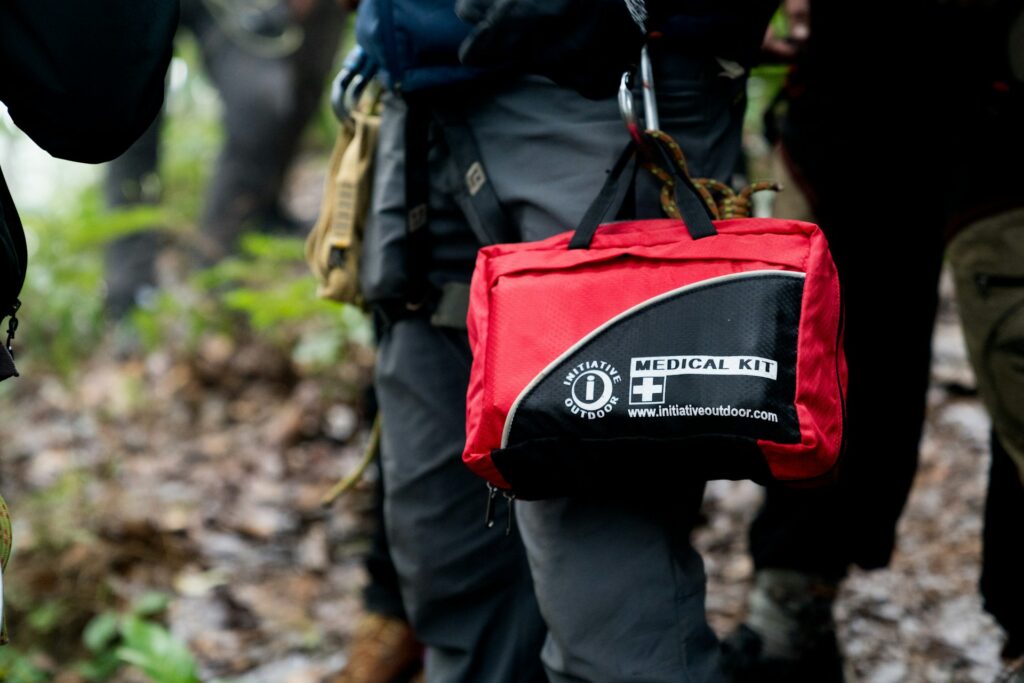
Once evacuation is successful and professional medical care becomes available, your role shifts to providing accurate information to medical providers. Communicate clearly about the mechanism of injury, the time elapsed since the injury occurred, any treatments provided, changes in the patient’s condition during evacuation, and any concerning symptoms observed. Be prepared to discuss the environmental conditions, as these impact treatment decisions for complications like infection or hypothermia. Follow up with any teammates who participated in the rescue, as psychological impacts may emerge days or weeks after the incident. Consider a post-incident review to identify lessons learned that might improve future wilderness emergency responses. While hopefully rare, these challenging experiences often provide valuable learning opportunities for improving wilderness safety practices.
Conclusion
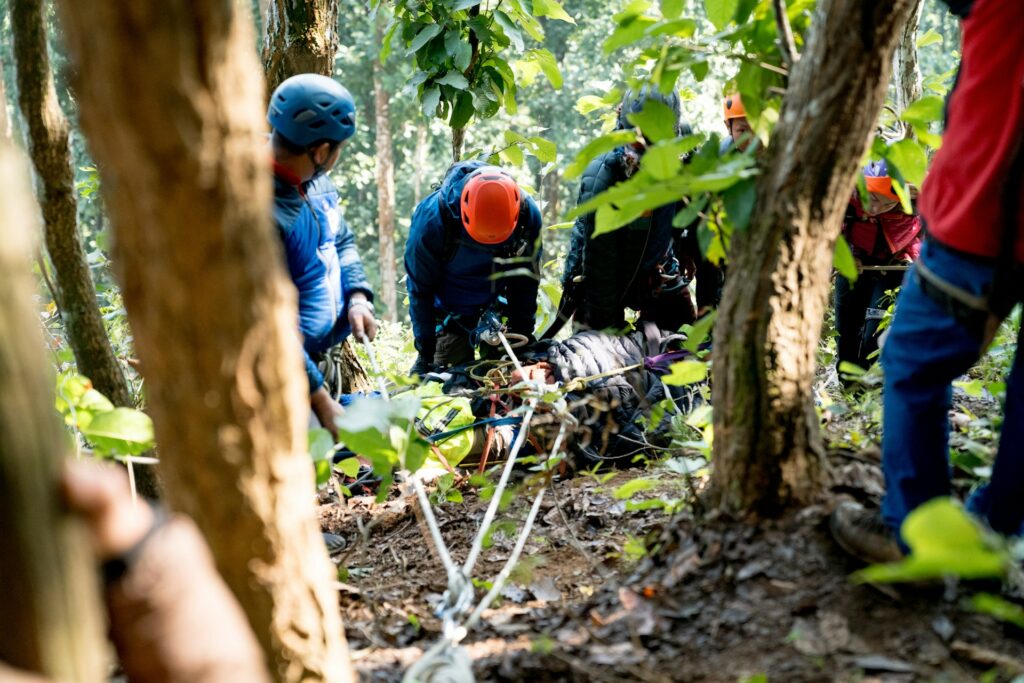
Breaking a bone miles from help represents one of the most challenging wilderness emergencies, requiring quick thinking, improvisation, and difficult decision-making. By understanding how to recognize fractures, provide appropriate first aid, create effective improvised splints, manage pain, recognize complications, and make sound evacuation decisions, you significantly improve outcomes in these remote medical emergencies. While these techniques cannot replace professional medical care, they can stabilize injuries and prevent complications during the critical period before reaching definitive treatment. As with all wilderness skills, preparation through proper training, carrying appropriate supplies, and thoughtful risk management provides the foundation for successfully navigating these challenging situations when they arise in remote settings.

